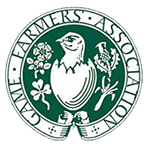Originally posted by doversoul
View Post
What birds (are you/have you been) watching? What birds have been watching you?
Collapse
X
-
 Richard Tarleton
Richard Tarleton -
 Richard Tarleton
Richard Tarleton
I keep a garden list. The rule is, you have to be in the garden when you see the bird, it doesn't actually have to touch down. As we're close to an estuary, and surrounded by countryside, it's quite longOriginally posted by doversoul View PostIt’s most likely that they don’t recognise my back garden as a garden

Comment
-
I saw a male blackbird earler this morning. Quite a rare sight here thesedays. As a child they were common now replaced by jackdaws and herring gullsOriginally posted by Richard Tarleton View PostI keep a garden list. The rule is, you have to be in the garden when you see the bird, it doesn't actually have to touch down. As we're close to an estuary, and surrounded by countryside, it's quite long
Comment
-
-
Lots of activity recently including today, Stanfordian, four blackbirds - two male, two female - who appeared to be engaged in a four-way brawl! A fat woodpigeon had to threaten one of the blackbirds which accidentally bumped into him. The usual suspects were all present today - chaffinches, tits, and lately goldfinches in numbers. Missing - thrushes and wrens and greenfinches on a regular basis. Jackdaws and magpies are always around and swoop for fatty scraps, and though gulls from the tidal river often fly over, I have not seen any in the garden.
Surprising, to me, is the sight of resident robins competing regularly for a turn at the sunflower hearts.
Comment
-
-
The huge number of jackdaws dominate these parts during Feb. I love to see them wheeling and soaring, not so keen when they descend on the feeders, whereas I've become more accepting of the raids from the sparrow hawk(s); top of the food chain, rarely successful but spectacular, waits in the yew tree from which it explodes like an avenging angel.
Whilst out driving nearby we were amazed to see a pair of oystercatchers fly across the lane in front of us - we live as far as you can get from the sea....checked and 6 had been sighted and logged with the Derbyshire Ornithological Society at Carsington Reservoir, which was where we saw them.
Comment
-
-
Yesterday we had five pheasants in our garden Probably 4 femaies and one male - though couple of these might have been juveniles. I rather think the four brownish ones are female, though. We also had some jackdaws, which the pheasants largely ignored, though looked up hopefully as they fed, in the expectation of seeds dropping below. A robin also appeared.
I don't really know how or why the pheasants have come here, but for the moment they seem a stable enough population. We do have foxes at night, so where these birds are staying without being eaten I don't know at all.
Comment
-
-
 Richard Tarleton
Richard Tarleton
It's likely given their short lifespan in the wild, rates of juvenile mortality etc. that few would have ther opportunity to mate with their offspring. By the following spring, the birds are likely to be well and truly dispersed/mixed up/dead. Incidentally you won't have "juveniles" around at the moment, too late for last year's young to be considered juveniles and too early for this....all the brown ones will be females I'd say. But I'm not an expert - most proper birders tend to ignore pheasants!Originally posted by Dave2002 View PostA further thought about pheasants, or indeed other birds which operate with harems. Are they incestuous?
Comment


Comment